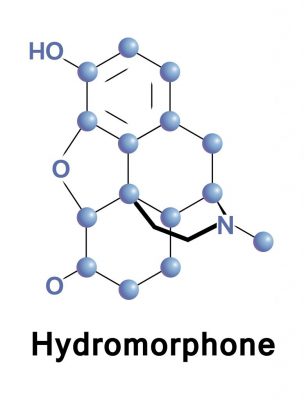
Its potent effects are felt in minutes and can last for over six hours. Dilaudid is typically administered to patients who have suffered burns or other physical injuries. Cancer patients may also be given Dilaudid during their treatment.
Like other opioid drugs, Dilaudid affects the nervous system through receptors in the brain, spinal cord, and digestive tract. It results in feelings of euphoria that can lead to Dilaudid abuse in many patients. When dependence occurs and opiate withdrawal becomes a deterrent, Dilaudid addiction rapid detox becomes a viable option.
Hydromorphone Rapid Detox
Dependence on Dilaudid can occur in just a few weeks, and many patients develop a tolerance that requires a higher dosage to achieve the same effects as before. When patients stop using the drug, they may experience Dilaudid withdrawal symptoms that make it difficult to quit.
The drug is available in pill and injectable IV formulas. Most people who become addicted to it choose the injectable form, which is more effective in creating euphoric feelings than pills.
The abuse of injectable narcotics leads to secondary health issues such as infections and damage to the veins. The drug is also often used alongside alcohol and benzodiazepines, which increase the risk to a patient’s health.
For the most successful rapid opioid detox treatment call us today!
See how our medically assisted detoxification program combines clinical excellence and a professional, caring environment, so you feel safe and welcome every moment of your stay.1-800-423-2482
Symptoms of Dilaudid Dependence, Withdrawal
Dependence may present itself through several symptoms. These include depression, anxiety, respiratory issues, nausea, pain, and high-risk behavior. These signs can make it easy for loved ones to determine when to seek rapid detox treatment for their Dilaudid addiction.
In addition to the symptoms related to opioid dependence, some symptoms occur due to Dilaudid withdrawal. When a person stops using Dilaudid, these symptoms can lead to a wide range of issues.
Dilaudid withdrawal symptoms include muscle and joint pain, nausea, inability to sleep, cravings, shaking, and cramping. An effective Dilaudid addiction rapid detox program can reduce the withdrawal length while providing a safe way to come off the drug.
Timeline for Withdrawal from Dilaudid
Dilaudid withdrawal syndrome often lasts 5-7 days. Although a week is the typical time frame, there is quite a bit of individual variability. Several different interacting factors can affect the length and symptoms of a Dilaudid withdrawal. For example, how much of the drug an individual typically took daily, how long they have been taking, and how they took the drug. When the drug is injected or snorted, it typically produces more severe and prolonged withdrawal symptoms. Individual differences in metabolism are also an essential factor.
Because of Diulaudids’ relatively brief half-life, individuals abusing the drug may begin experiencing nausea, restlessness, irritability, and anxiety within 4-8 hours after the last use. Withdrawal symptoms will continue to intensify. For most individuals, symptoms of withdrawal will reach their peak within 12-48 hours. However, in many cases, people still have severely distressing symptoms for 3-4 days. The most common symptoms are nausea, vomiting, diarrhea, profuse sweating, fever, chills, muscle spasms, body aches, insomnia, anxiety, depression, and severe cravings. Some individuals become confused, depressed, and even suicidal.
In most cases, withdrawal symptoms will become less severe after the first 48-72 hours. Nonetheless, people may still have nausea, anxiety, irritability, sleeplessness, depression, and cravings for weeks.
The withdrawal syndrome will be resolved within 5-7 days after discontinuing the drug for most people. However, in some cases, the person continues to experience difficult emotional issues for weeks or even months. Some of these issues can include anxiety, depression, and cravings, especially when facing stressful situations.
Relapse potential during opiate withdrawal is high during all stages but particularly high as the withdrawal symptoms become more intense. For this reason, hydromorphone detox might be the best treatment option for many.
Benefits of Dilaudid Rapid Detox
Dilaudid rapid detox treatment begins with an evaluation of a patient’s health and dependency history. The evaluation process allows doctors to develop an adequate treatment program to fit each patient’s unique needs. Having several options of treatment allows for better results while minimizing safety risks. Furthermore, having a few days of post hydromorphone detox care allows a patient the time and professional assistance needed to safely, comfortably, and effectively go through the regulation period.
In addition to physical recovery, psychological care is provided through Dilaudid addiction rapid detox therapy sessions that help uncover the underlying causes of addiction. Issues related to depression and anxiety might cause patients to relapse.
This combined approach leads to an effective Dilaudid rapid detox treatment program that provides relief from opiate dependence.








